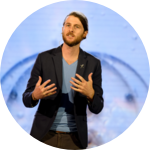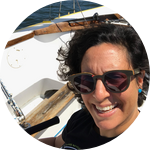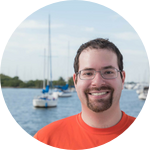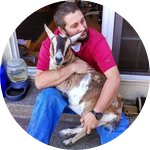About This Project
The deep sea is recognized as a hotspot for microplastic accumulation. While we are beginning to understand how microplastics accumulate in deep ocean sediments, few studies have investigated microplastic accumulation within organisms at vents and seeps. Access to a unique archive of biological samples provides a once-in-a-generation opportunity to establish a baseline for microplastic accumulation in hydrothermal vent and methane seep species.
Ask the Scientists
Join The DiscussionWhat is the context of this research?
Microplastics are now ubiquitous in the world's oceans. Though they have been found in the tissues of shallow water species and isolated from deep-sea sediment, only a few studies have investigated the extent to which microplastics have accumulated in the tissues of deep sea macrofauna, especially those associated with hydrothermal vents and methane seeps. These ecosystems are not only deep, dark, and diverse, but rely on chemosynthesis for primary production.
We have a unique opportunity to examine an archive of deep-sea animals collected from hydrothermal vents and methane seeps around the world between 2007 and 2020. These samples were preserved for molecular studies and are suitable for the type of destructive sampling necessary to extract microplastics from tissue.
What is the significance of this project?
Do microplastics accumulate in species that derive their food from the chemical energy in the plume of a hydrothermal vent? Does microplastic accumulation differ among non-chemosynthetic species associated with vents and seeps? Do patterns of microplastic accumulation vary among distinct deep-sea ecosystems and the general abyssal plane?
This pilot study would represent the first attempt to develop a baseline assessment of microplastic accumulation in animals from deep-sea hydrothermal vents and seeps. This baseline could help provide insight into the extent of microplastic contamination throughout the ocean biosphere, as well as across ecosystems and organisms with vastly different feeding strategies.
What are the goals of the project?
Our objective is to establish a baseline for microplastic accumulation in deep-sea macrofauna from hydrothermal vents and methane seeps. Using an archive of deep-sea samples, we will digest select organisms, including but not limited to gastropods, polychaetes and arthropods that have been fixed in ethanol, in a solution of KOH or other appropriate base. Once comprehensively digested, microplastics will be isolated from the solution and quantified using standard and fluorescent microscopy.
With little literature on the extent to which microplastic uptake occurs in species from these rare ecosystems, this baseline will enable us to better understand patterns of microplastic accumulation in the deep sea.
Budget
The most significant cost for this project is time. Thanks to in-kind donations from partner labs, we have access to microscope facilities and wet lab space, with a relatively small facilities fee to cover equipment maintenance. The budgeted hours will allow me to focus on sample processing, plastic counting, and data analysis for 1 quarter, enough time to complete the pilot study and begin analyzing and publishing data.
Consumables include base solution for organic tissue digestion, as well as hazardous waste disposal and fluorescent dyes for plastic detection. Finally, the open access publication fee will allow me to make all result widely available to interested stakeholders.
Endorsed by
 Project Timeline
Project Timeline
While the timeline will be heavily dependent on the final digestion protocols, we anticipate a six-month timeline from first sample process to first datasets ready for publication.
Mar 28, 2023
Project Launched
Apr 27, 2023
Completion of Crowdfunding Campaign
Jun 30, 2023
Establish lab safety protocols, collaboration agreements, and initial acid digestion and disposal protocols
Jul 31, 2023
First pilot study: microplastic accumulation in limpets from deep-sea hydrothermal vents in the western Pacific
Aug 31, 2023
Expansion of sample survey to other species across the deep-sea
Meet the Team
Andrew Thaler
Andrew Thaler is a deep-sea ecologist, conservation technologist, and ocean science educator. His work focuses on how humans use technology to interact with and experience the ocean. This is expressed through three separate tracts: Understanding the environmental consequences of deep-sea mining and developing policy and management frameworks to mitigate those impacts; Building low-cost, open-source tools for underwater exploration, including remotely operated vehicles and sensor platforms; and developing educational curricula, hands-on STEM workshops, and conservation technology challenges to empower stakeholders to develop their own research tools. The work naturally blends with other areas of conservation and technology, including implementing 3D-printing workshops, virtual reality experiences, and technology development training programs, as well as designing DIY educational tools and ocean STEM/STEAM programs.
He is the founder and lead developer of the OpenCTD project, the CEO of Blackbeard Biologic, and an adjunct professor at the University of Maryland Center for Environmental Studies and the University of Delaware.
Project Backers
- 21Backers
- 100%Funded
- $11,346Total Donations
- $540.29Average Donation





